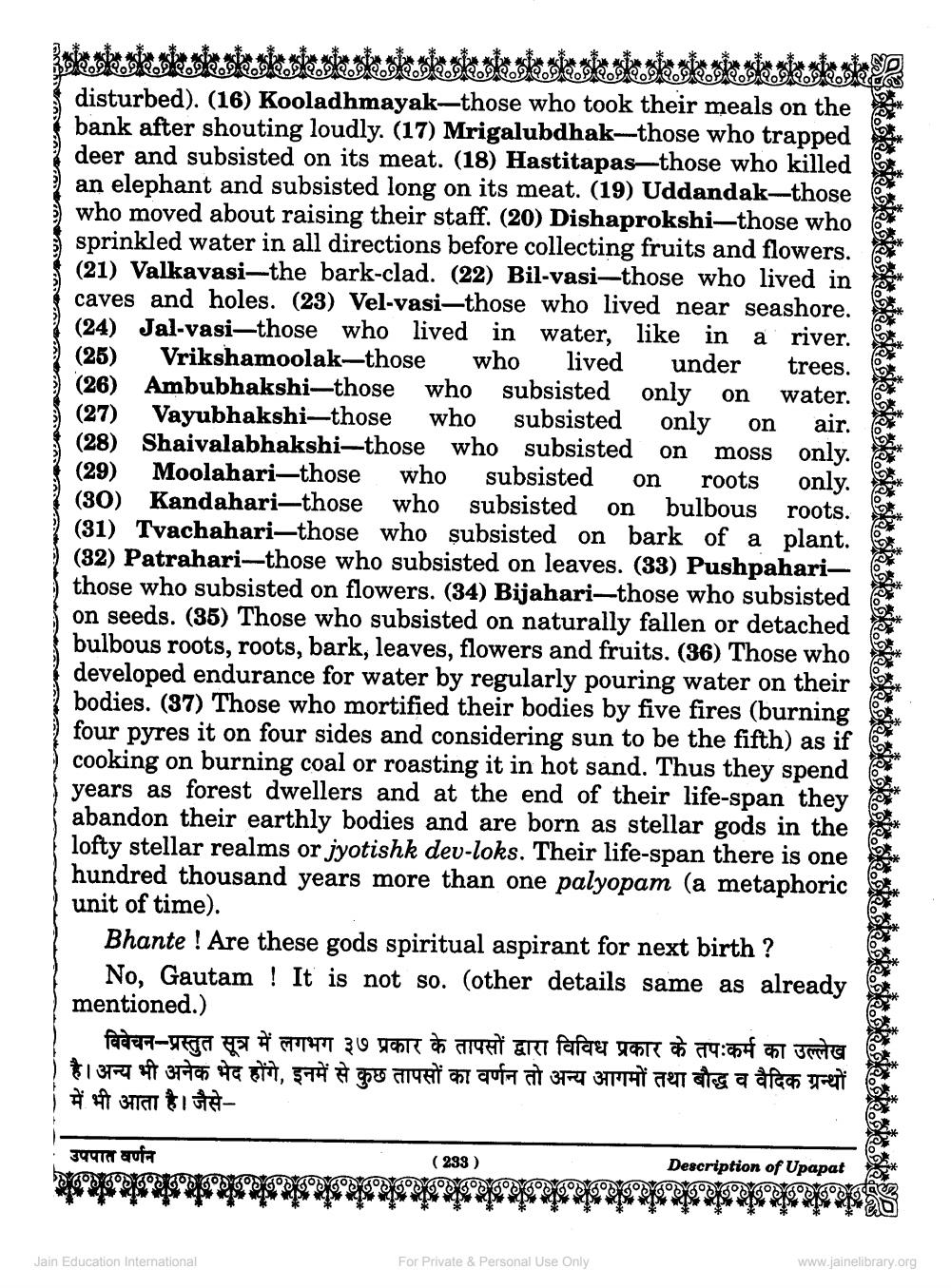________________
(29)
disturbed). (16) Kooladhmayak-those who took their meals on the bank after shouting loudly. (17) Mrigalubdhak-those who trapped deer and subsisted on its meat. (18) Hastitapas-those who killed an elephant and subsisted long on its meat. (19) Uddandak-those who moved about raising their staff. (20) Dishaprokshi-those who sprinkled water in all directions before collecting fruits and flowers. (21) Valkavasi-the bark-clad. (22) Bil-vasi-those who lived in caves and holes. (23) Vel-vasi-those who lived near seashore. (24) Jal-vasi-those who lived in water, like in a river. (25) Vrikshamoolak-those who lived under trees. (26) Ambubhakshi-those who subsisted only on water. (27) Vayubhakshi-those who subsisted only on air. (28) Shaivalabhakshi-those who subsisted on moss only. Moolahari-those who subsisted on roots only. (30) Kandahari-those who subsisted on bulbous (31) Tvachahari-those who subsisted on bark of a plant. (32) Patrahari-those who subsisted on leaves. (33) Pushpaharithose who subsisted on flowers. (34) Bijahari-those who subsisted on seeds. (35) Those who subsisted on naturally fallen or detached bulbous roots, roots, bark, leaves, flowers and fruits. (36) Those who developed endurance for water by regularly pouring water on their bodies. (37) Those who mortified their bodies by five fires (burning four pyres it on four sides and considering sun to be the fifth) as if cooking on burning coal or roasting it in hot sand. Thus they spend years as forest dwellers and at the end of their life-span they abandon their earthly bodies and are born as stellar gods in the lofty stellar realms or jyotishk dev-loks. Their life-span there is one hundred thousand years more than one palyopam (a metaphoric unit of time).
roots.
Bhante! Are these gods spiritual aspirant for next birth?
No, Gautam ! It is not so. (other details same as already mentioned.)
विवेचन - प्रस्तुत सूत्र में लगभग ३७ प्रकार के तापसों द्वारा विविध प्रकार के तपःकर्म का उल्लेख है। अन्य भी अनेक भेद होंगे, इनमें से कुछ तापसों का वर्णन तो अन्य आगमों तथा बौद्ध व वैदिक ग्रन्थों में भी आता है। जैसे
उपपात वर्णन
Jain Education International
(233)
For Private & Personal Use Only
Description of Upapat
www.jainelibrary.org




